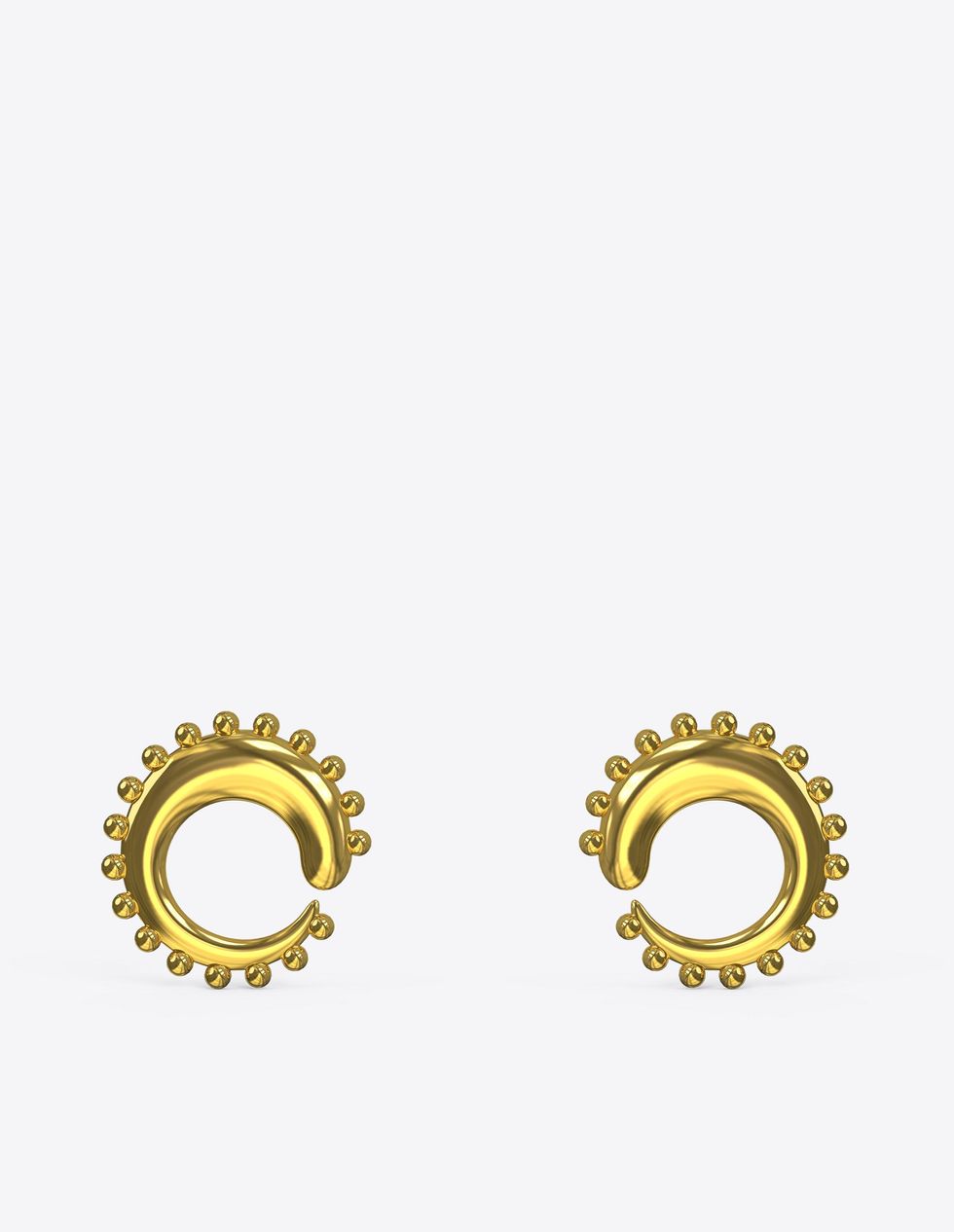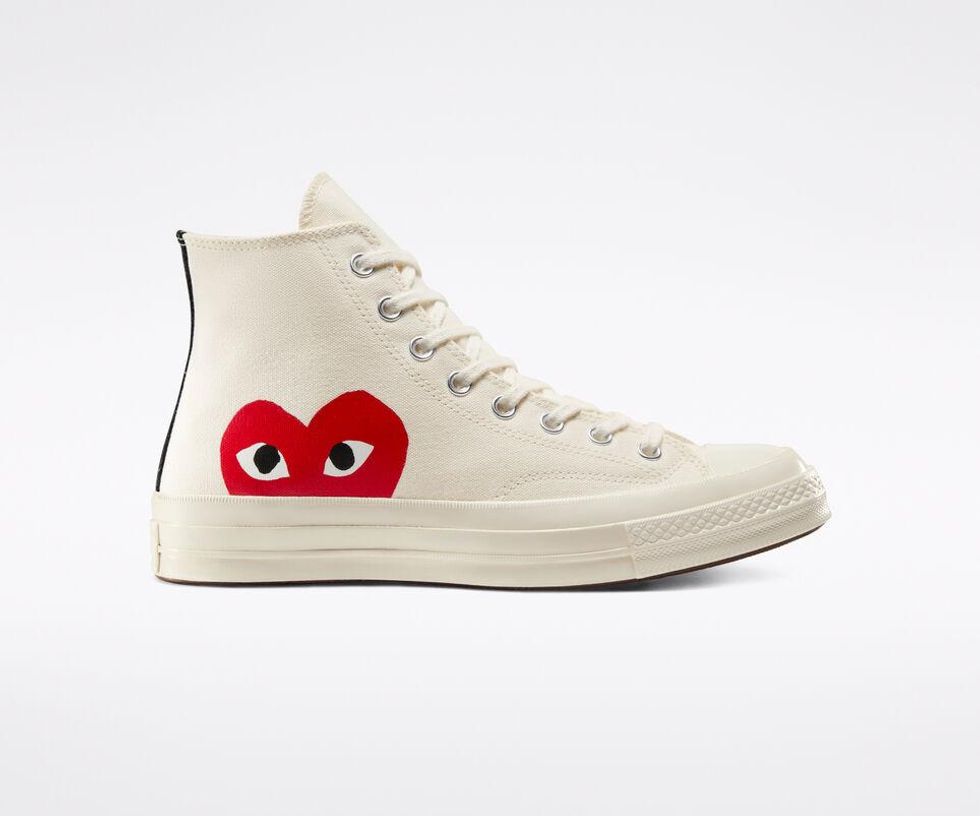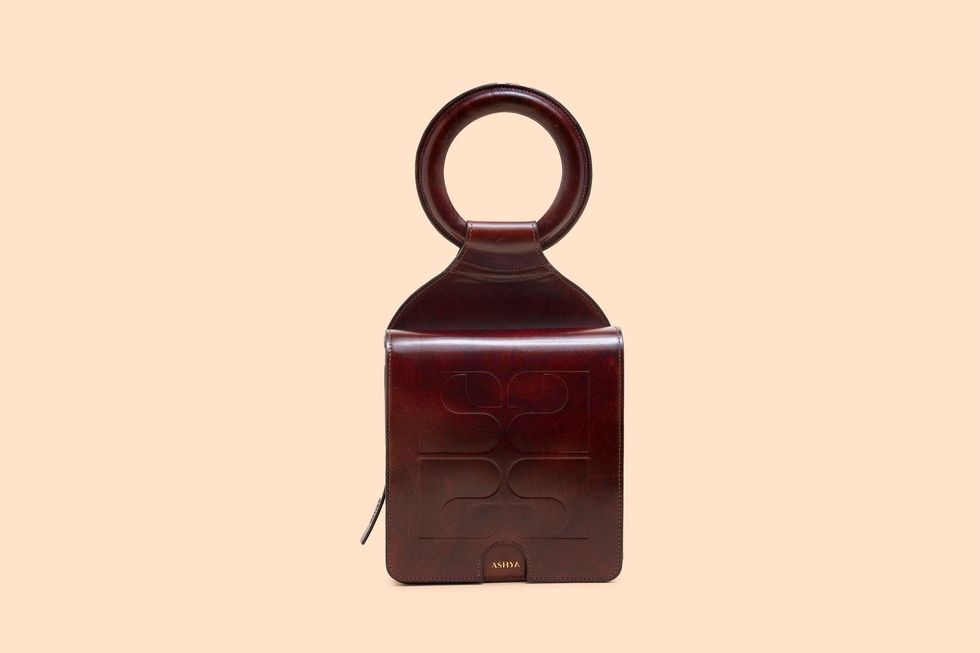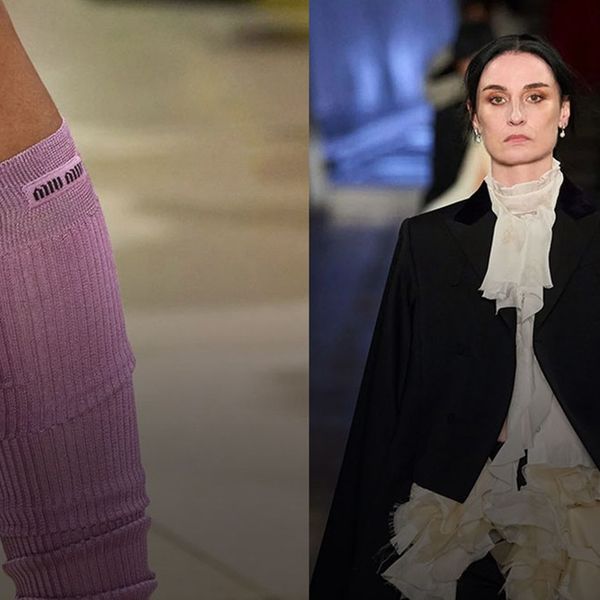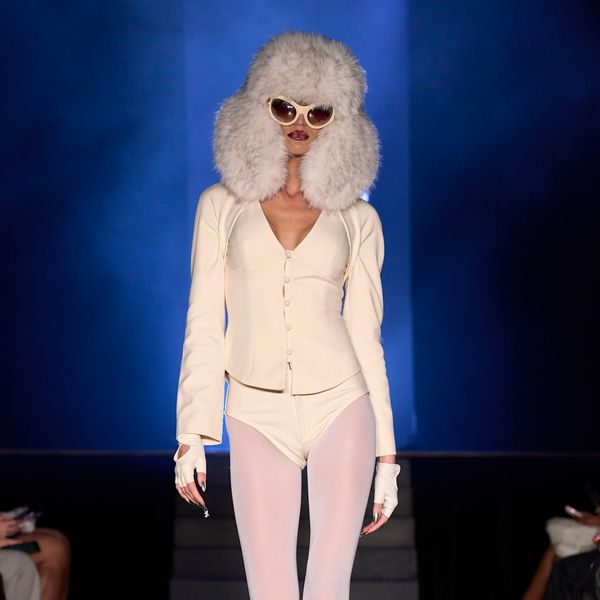A Closet That Challenges the Concept of Fantasy
Khiry designer Jameel Mohammed wears Gap cargo pants with a floor length tinsel gown.
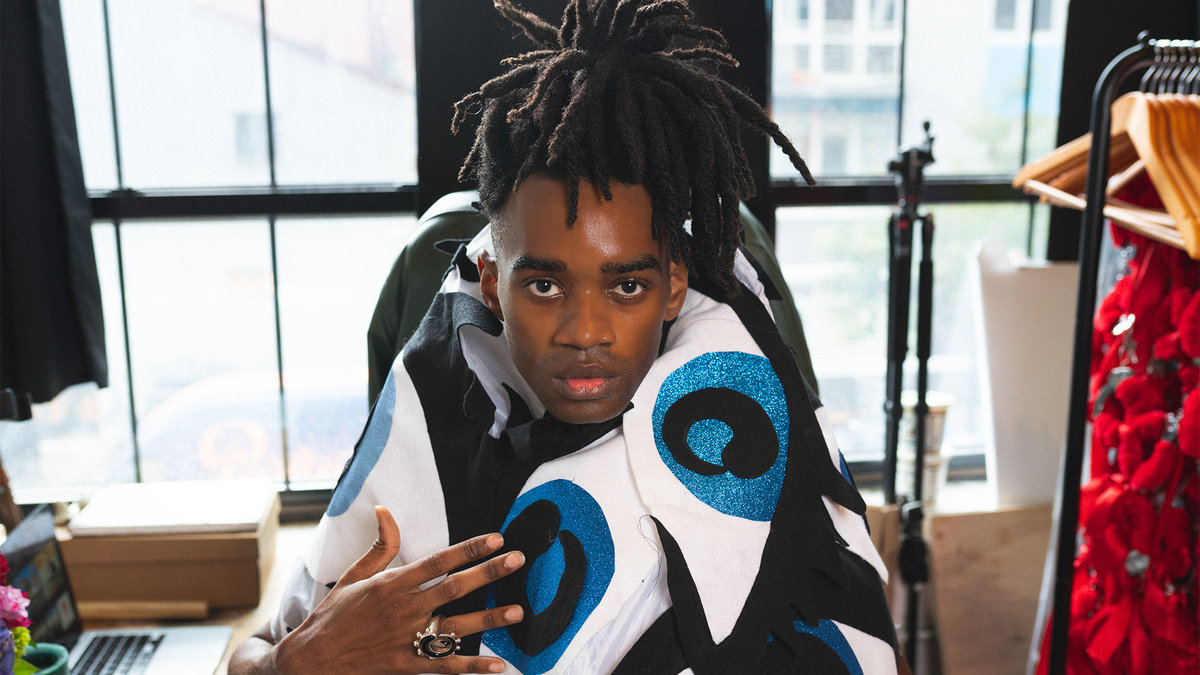
Jameel Mohammed's creations always begin with a sketch. With each subsequent drawing, he capitalizes on initial imperfections, or "mistakes" as he deems them. “I'll look at it from the front and say, ‘Wait, couldn't this shape be a bag?’" he muses. (That "shape" was initially intended to be a vase.) Mohammed only diagnoses the impetus behind a series of these creations in retrospect. “If the [feeling] is hopeful with a tinge of sorrow, which pieces were inspired by the time I was watching a documentary about [colonialism]?” Whether it's through ready-to-wear, jewelry, or objects, the designer invokes this seemingly backwards method to tackle questions around the Black experience through his design.
The Chicago native launched his brand Khiry his junior year (2016) at the University of Pennsylvania, where he studied political science and behavioral economics (though he never completed his degree). He debuted with jewelry for pragmatic reasons. Internships at Narciso Rodriguez, Nicole Miller, and Barneys through high school and early college helped him to understand what it takes—specifically in terms of business scale—to create ready-to-wear deserving of the luxury descriptor. In 2021, he introduced ready-to-wear—if you can call it that. The ensembles featured materials ranging from feathers to cannabis packets to deconstructed American flags. His outlandish designs prioritize shock value over creativity for good reason. Mohammed has an informed reverence for the complexity of a simple yet perfect garment, for which he doesn't yet possess the means. “I think my intention at this stage of my business is to demonstrate and create items that can sit in my archive and be the foundations for when I make those wearable garments,” he says.
The 27-year-old acknowledges the fashion industry's troubling logistical barriers (as any designer knows, an editorial or celebrity placement does not guarantee business success), but no such thing exists in the way of his creativity. Throughout the pandemic, Mohammed experimented with sculpting. He collaborated with Fleuriste St. Germain to create a pop-up shop fit for a floral enthusiast. And in multiple of his endeavors, the multi-hyphenate talent has moonlit as a jazz singer. So where is the consistent factor in this un-siloed approach to creativity? Mohammed resolved his thoughts on this question during our interview. “I think that it comes from a place of understanding that the function of art for Black people has rarely either been read as or actually been purely aesthetic production.” The work Black creatives make is typically categorized as political at the onset. “And there's also inherent politics to any production in any space,” listing trade relationships, aesthetic priorities, and production mechanisms as evidence. "If I can't control the global economy, perhaps I can inspire and create space for questions about why it's out of our control."
His first taste of this world of fashion he's now deconstructing at an all-encompassing scale with was highly personal. A favorite New York-based aunt, helped him to realize his innate sense of style—at the J.Crew in downtown Chicago. There, they crafted the middle schooler's new look—”preppy suburban, but cooler"— with jewel-toned sweaters and corduroys. "It was both irreproachably acceptable, and expressively flavorful," Mohammed reflects. He first realized the power of fashion in the reaction of his peers. “I saw the difference of how I was being regarded in the community by everyone, teachers, kids, parents, random person on the street," he recounts, "when I was in my cords with my little corrugating graph paper shirt, in my little cashmere emerald sweater.”
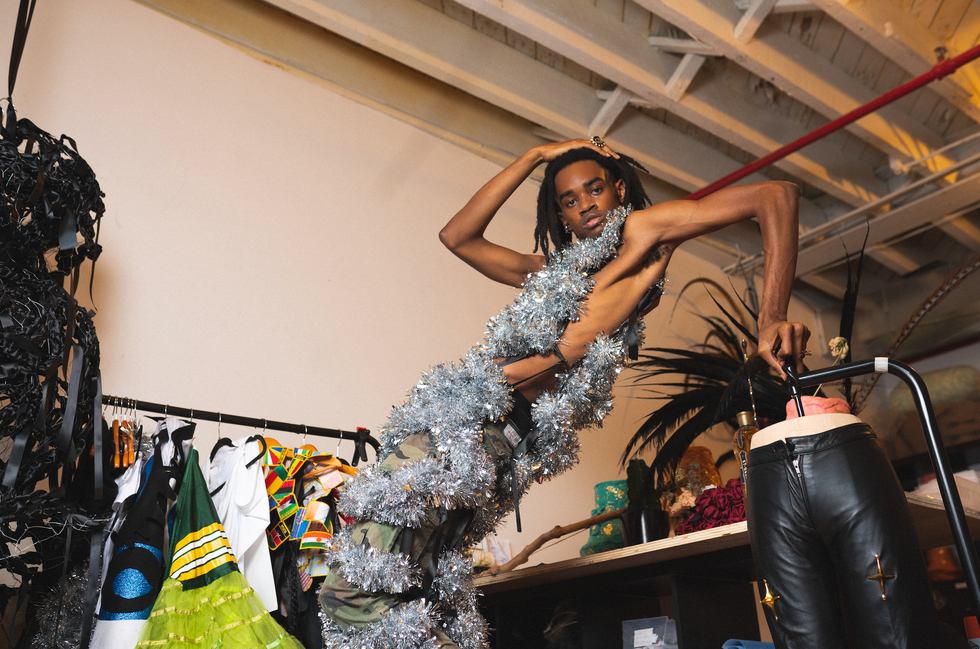
Fast forward to high school and he was going to Borders, collecting Man About Town and Bullett. Thrift stores simultaneously lit the fuse of inspiration and had him throwing down quick sketches while he manned the phones at his local pizza restaurant. On his own body, he was indulging in classic vintage finds, tweaked to his liking. The style-obsessed teen was wearing an "oversized shirt, super tight cords that had shrunk in the wash a few times, rolled up with loafers and white or red or crazy socks," he explains. "I would eventually spray paint the cords with bleach so they would have this kind of galaxy effect. Or maybe a mink jacket on top, and then a painted American flag on a white blazer that I cut the sleeves off for a vest. It got more and more punk over time."
As his professional career bloomed, the 2021 CFDA Vogue Fashion Fund Finalist and Forbes 30-Under-30 recipient distanced his personal outward expression from his designs. Today, Mohammed errs more towards the stereotypical notion of a subdued artist's ensemble. “I think my uniform is a reflection of the life I lead," he says. "I want to be kind of unreadable in most circumstances that I'm in, and really ultimately able to move between worlds without sticking out too much in any place.” When we spoke he donned a simple salmon t-shirt. He also favors the Gap—mainly because they are one of the few brands that accommodate his 6'5" frame. He’s also dressing for his current lifestyle—”I'm going to the bodega and then to the studio and then to the bodega”—save when he attends major events (like the Met Gala which he attend in 2021). That’s when he gets to feel what it’s like in his own designs. He pauses when I ask how much he designs for himself. "I would definitely not say that I'm consciously, per se, thinking about myself," he posits, "but if you looked at my sketches, you'd be like, "Girl, this is you." The designer is referring to the lanky model consistent through his figure drawings. He also often models his own pieces on his Instagram page. “I [just] design things that I happen to look really, really good in,” he laughs.
Shop the Story:
Want more stories like this?
Stylist Ian Bradley's Closet Pays Homage to Early 2000s New York Nightlife
Sherri McMullen's Closet is Home to Dries Van Noten, Simone Rocha, And—Of Course—Christopher John Rogers
Inside A Brooklyn Closet Where Gender is A Construct and Sequins Are A Must


